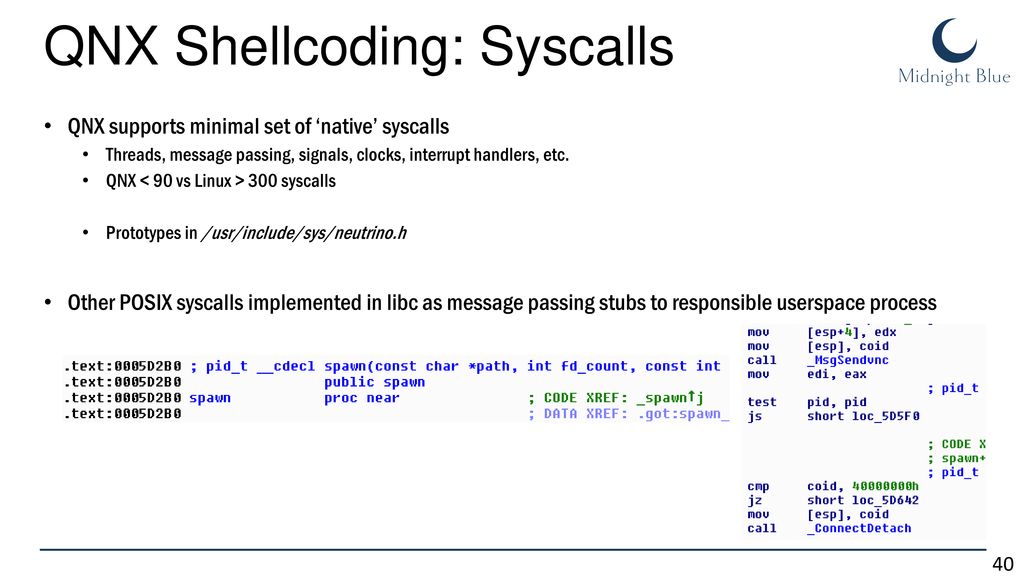

This implies that the firm could garner roughly $144 million from its QNX business this year, assuming a fee of $4 per license. The company has indicated that typical licences for automobiles sell for roughly $3 to $5 per unit. QNX is believed to power well above 60 million automotive infotainment systems globally, and Blackberry is expected to deliver 36 million QNX licenses in 2017. Although BlackBerry does not break down its QNX revenues, the product is likely quite lucrative for the company at the moment.
Qnx Vs Linux Software On Top
QNX security as well as QNX OS internals more broadly. People are running mission-critical storage controller software on top of Linux/FreeBSD and don't complain it's not a RTOS.vulnerabilities on QNX as well as the strength of. While I'd prefer QNX to run a nuclear power plant, I don't see QNX running on any of the top 500 supercomputers. Margins on the software could also be attractive, given the potentially limited marketing expense compared to BlackBerry’s other software products and also due to the significant volumes.With the right extensions, Linux can be as stable as QNX.
The interfaces that ship with cars today are viewed as somewhat underwhelming by customers, as automakers typically lack the software design and UI expertise. QNX software essentially operates behind the scenes, running the core functionality of the system, with car companies building their custom interfaces on top of these operating systems (Ford’s Sync and Audi’s MMI, for example). Automotive infotainment systems and the business model that BlackBerry uses to sell the software could be ripe for disruption.

Qnx Vs Linux Trial Embedded Systems
For instance, the QNX Neutrino RTOS is an operating system that powers time-sensitive tasks, such as driver assistance systems for cars as well as medical, military and industrial embedded systems. This could put BlackBerry, which lacks a platform, at a significant disadvantage as the market evolves.While the bread-and-butter business faces risks, there is scope for QNX to expand in areas such as the Internet of Things and more specialized automotive technologies. Besides tremendous amounts of capital and sizable R&D budgets, both Apple and Google have deeply entrenched digital platforms that include large smartphone user bases as well as an army of application developers. The company is likely to license the OS – which is expected to run natively on the infotainment system’s CPU, unlike Android Auto which is just a projection of the phone – to car makers just as it does for phone OEMs. Google, on the other hand, has formally launched its “Android Automotive” infotainment system, bringing a car-focused version of Android to market.
Alternatives such as Windows and most versions of Linux are not compliant with the standard.View Interactive Institutional Research (Powered by Trefis):Global Large Cap | U.S. For instance, QNX is compliant with ISO 26262 – which is essentially an international standard for safety for electronics systems in automobiles.


 0 kommentar(er)
0 kommentar(er)
